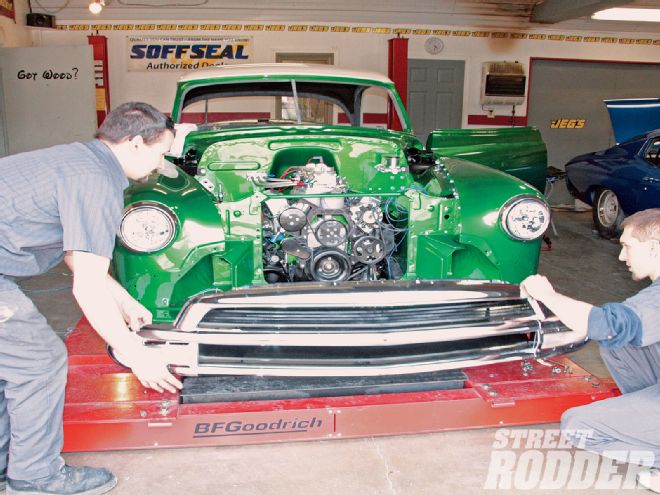
No matter what the styling may be, bare bones to high tech, two things that set one street rod apart from another are detailing and workmanship. Few things add to the detailing of a car like chrome, but just like the other visual aspects, like paint and upholstery, the workmanship of plating varies. To find out what it takes to make it great, we visited Sherm's Plating and went through the process from beginning to end.
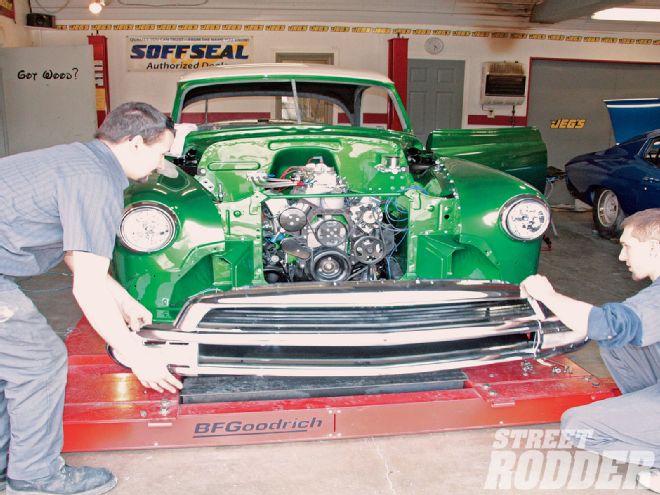 The brilliant shine of chrome plating adds a distinctive touch to any car. Sherm's handled all the bright work on last year's Road Tour Chevy as well as the AMSOIL/STREET RODDER Road Tour '10 car: a Shadow Rods Ford Model T XL27.
The brilliant shine of chrome plating adds a distinctive touch to any car. Sherm's handled all the bright work on last year's Road Tour Chevy as well as the AMSOIL/STREET RODDER Road Tour '10 car: a Shadow Rods Ford Model T XL27.
Chrome is applied by a process called electroplating, which uses an anode, a cathode, and a liquid bath of the material used for plating. The simple explanation of the process is electrical current flowing from the anode carries dissolved metal in the solution where it is applied to the surface of the cathode, or the part being plated. But while that sounds simple, in reality the plating process is a complicated chemical process that requires expensive equipment, constant monitoring of solution strengths and temperatures, not to mention strict adherence to a long list of safety and health standards. Sherm's is a zero-discharge facility, which means they have invested in, among other things, an ion exchange unit that continuously circulates and purifies processed water, making it cleaner than what comes out of the tap.
Although all chrome shops use the same basic plating process, the process of how parts are prepped has a huge impact on the finished product. Art Holman of Sherm's compares chrome plating to a paintjob-in both cases the finished product is only as smooth as the surface below, and the smoother the surface the more reflective it will be. And like a paintjob, the prep work for chrome is the time-consuming, and consequently, expensive part of the process.
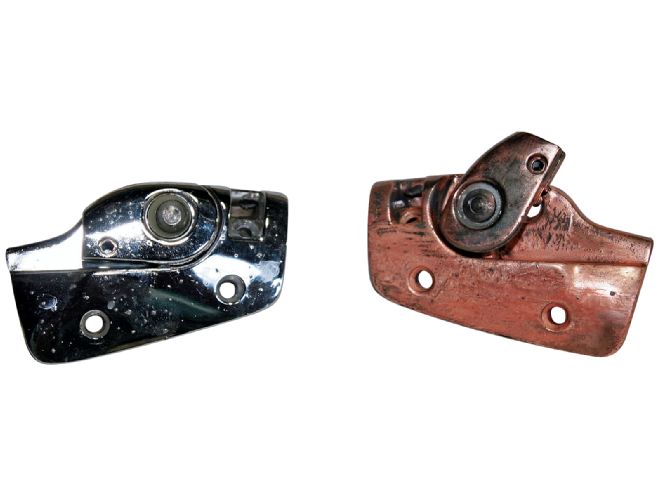 Compare these two parts. Note the blisters in the chrome on the piece on the left. The piece on the right has had the chrome chemically stripped, however the pits remain.
Compare these two parts. Note the blisters in the chrome on the piece on the left. The piece on the right has had the chrome chemically stripped, however the pits remain.
When parts come into Sherm's for plating they are cataloged and inspected. Previously chromed parts are stripped and all parts are mechanically and chemically cleaned. Next, the visible surfaces of the part are smoothed to remove any imperfections. If necessary, some filling is done-lead is normally used for cosmetic fixes while structural repairs call for welding with the base material.
With the prep work done, the next step in plating is the copper coat, which is like primer for paint. In some cases several coats of copper will be applied and smoothed to make the surface perfect. On many early cars, cast pot metal trim parts were used, which often require special preparation before plating. Pot metal is made from a variety of materials, including zinc, which has a low boiling point. Consequently, during the casting and subsequent cooling process, air bubbles can be trapped in the part, which ultimately leads to corrosion and blisters in the chrome plating. The only way to repair a blistered pot metal part is to strip it, clean out the pit to get rid of the corrosion, then make the surface level using solder as a filler. However, there's a catch: lead won't adhere to pot metal, so the part is given a thin coat of brass. Although solder will stick to copper, there is a compelling reason for using brass. Intricate, ornate design work is often incorporated onto the surface of these cast pieces and, compared to copper, a much thinner coat of brass can be applied to the piece, so even the most delicate details can be preserved.
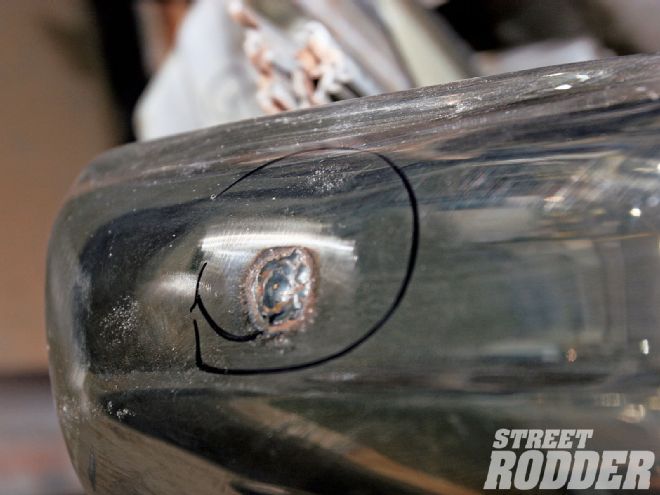 Here's a great example of how not to help the chrome shop. If you want smooth bumpers, let them weld the bolts in place. Never try to remove old chrome or weld up damage to save money. It will most likely cost you more in the long run.
Here's a great example of how not to help the chrome shop. If you want smooth bumpers, let them weld the bolts in place. Never try to remove old chrome or weld up damage to save money. It will most likely cost you more in the long run.
To use the paint analogy once more, after the part to be chromed is smooth and straight the color coat is applied, and in the plating process that means a coat of nickel. Nickel provides the smooth, shiny reflective surface, but left unprotected it will tarnish. Like the clearcoat on paint, to protect the nickel, the final step in the plating procedure is an application of chrome. Surprisingly, this is the least time-consuming step of all the processes, taking only a few minutes in most cases. But that doesn't mean there aren't some tricks involved. Depending on the shape of the piece being plated there may be high- and low-density areas-that means areas that are prominent are high density and will attract more current and consequently a thicker layer of chrome, areas like concaves are low density and won't receive as thick of a deposit. The cure for this is experience and specialized equipment, and Sherm's has both.
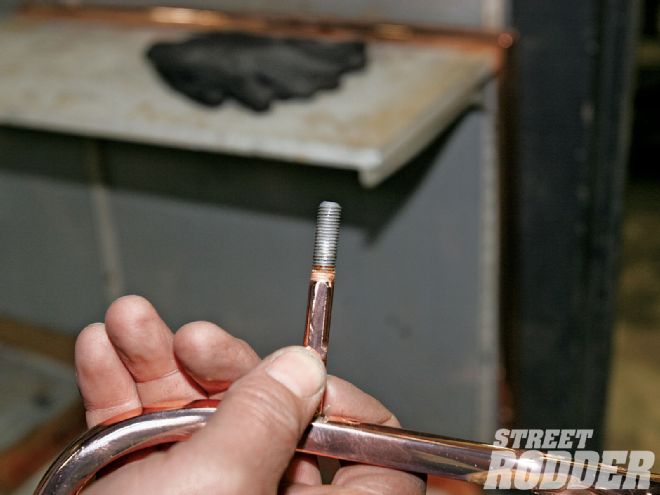 To prevent buildup on critical surfaces, such as threads, they are covered before the part is plated.
To prevent buildup on critical surfaces, such as threads, they are covered before the part is plated.
When it comes to detailing, nothing compares to the sparkle of chrome. It adds depth, dimension, and a rich look unmatched by any other finish. But just like a great paintjob, every step in the plating process impacts the final product. Thanks to the crew at Sherm's for showing what it takes to produce perfect plating.
Not all that Shines is Chrome
Another type of bright work that Sherm's can work magic on is stainless steel. Much of the trim on the cars we know and love is made from stainless. And while there is no plating required, it's not unusual for stainless parts to suffer dings and dents or worse, fortunately stainless is tough stuff that can often be saved.
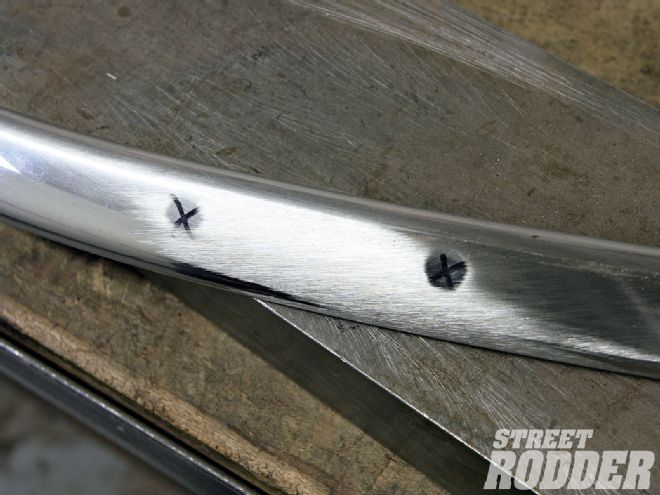 The first step in making repairs to stainless trim is light sanding to show the high and low spots.
The first step in making repairs to stainless trim is light sanding to show the high and low spots.
Much like bodywork, the procedure to repair damaged stainless is to use carefully wielded hammers and dollies (in some cases silver solder is used to repair rips and tears), which is followed by careful sanding and buffing. The end results are parts that are good as new and shine like chrome.